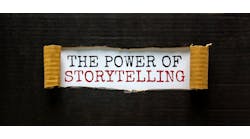They lay among the clutter on his workbench — the orientation notes from a week-long seminar I presented to operations and maintenance describing the chlorine plant. Yes, they were dog-eared and coffee-stained; they could have come from my desk. Instead, here they were on Denny’s workbench — I didn’t even know he could read! When I asked him about it, he said, without flattery, “You’re the only engineer that ever bothered to tell us how the plant works.” It was one of the greatest compliments I ever received. There is a lesson in this: never underestimate people’s desire to improve their work. Denny, and the rest of my instrumentation crew, used the notes frequently for troubleshooting. Since then, I have stressed the value of educating plant personnel on how chemical processes work. There is a difficult problem to overcome. How can you teach someone who does not understand, nor has the desire to understand, chemistry and math — the cornerstones of chemical engineering?
First, throw out any concepts that require an equation to explain. Develop a cause and effect relationship. Instead of writing Bernoulli’s equation, simply state that if you increase the speed of a flowing stream, i.e., gas or liquid, you will decrease its pressure, and vice versa. One advantage in talking to operators and mechanics is that they are usually familiar with hardware — tractors, cars, etc. So, don’t describe Newton’s first law of physics with the formula: F = ma. Instead, simply stating that every force causes a reaction to that force suffices for people who understand camshafts and gears. Besides cause and effect relationships, there are other tools available for teaching theory.
Consider, for instance, what I did at that seminar, while explaining improvements in the relief systems. Of course, there is not much point in explaining the advantage of replacing burst indicators (BDIs) with instruments to people who do not understand how a rupture disc works. You must explain change in terms people will appreciate. With the BDIs, I said that a minor crack in the disc, sometimes caused by poor installation, neutralized the pressure across the disc. Hence, it was easier to detect a blown disc from a pressure transmitter than a BDI. Stressing the importance of good installation led to a round-table discussion about the subject.
Another useful tool is the case study. A good case study describes before and after but also how a change occurred. When I observed how important it was to avoid low make-up flow to an HCl absorber, I avoided a discussion of “heat of reaction.” I merely stated the fact, then showed several pictures of melted and burnt packing. The pictures got the point across — [em dash] even with a language barrier! Other tools useful for a case study include time-lines, fishbone diagrams, and alarm trip summary tables.
When dealing with a language barrier it is important to leverage immediate results. I once taught four Korean operators in the nuances of starting up a combustion system — [em dash] without speaking a word of Korean. After performing the start-up a few times for all, I walked each operator through the steps. Throughout the process, I stopped to show the trend-lines and alarms. For example, increasing the set point for a burner causes the control valve to crank open— [em dash] instantly assigning an associated cause and effect. It was exhausting, this individual tutoring, but it paid off. Within a few days, they felt comfortable starting the burners. Not all theory can be taught in the comfort of a control room.
After a few days of working through theory in the classroom, I found it useful to show operators how it translated into practice. The “field trip” method is more effective if they can see a plant in operation.
Bringing in a few operators for a coffee-break discussion is also worthwhile.
Regardless of the method, lecture or field trips, teaching your operators the physical principles at your plant is critical. The reward is a safer plant, a safer worker, and less headaches. Who knows, the life you may save may be your own.

